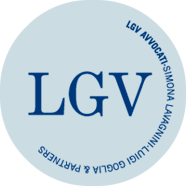THE THREE-DIMENSIONAL TRADEMARK MARK ON NESPRESSO CAPSULES HAS BEEN DECLARED INVALID BECAUSE ITS SHAPE IS NECESSARY TO OBTAIN A TECHNICAL RESULT
01/06/2022
The Swiss Federal Court ruled that the three-dimensional trademark on Nespresso capsules is invalid. The shape of the capsules has been considered by the Swiss Court to be necessary to achieve a technical result.
The lengthy case that pitted the Swiss-based multinational against Ethical Coffee SA recently ended with a declaration of invalidity of the 3D trademark of the capsules containing the ground coffee of the well-known manufacturer controlled by Nestlé SA. The dispute arose from Nestlé’s claim of infringement of the registered three-dimensional trademark against Ethical Coffee. The plaintiff company claimed that Ethical Coffee’s production and marketing of capsules compatible with Nespresso coffee machines constituted an infringement of the shape trademark. Nestlé had, in fact, registered the three-dimensional distinctive sign, first internally, with the Federal Institute of Intellectual Property (IPI) and, subsequently, also at European Union and international level. For these reasons, in 2011 Nestlé start a provisional proceeding against Ethical Coffee, requesting an injunction to stop the production and sales conduct considered in violation of to the plaintiff’s intellectual property rights. The case, which had been protracted in time, also for reasons due to the bankruptcy of the defendant, was decided on the merits by the Cantonal Court of Vaud, rejecting the plaintiff’s claim. On the other hand, the court of first instance upheld the counterclaim brought by Ethical Coffee and declared the invalidity of the claim brought by Nestlé. According to the judge, the title in question had become a public domain trademark. The unsuccessful party then appealed against this decision, but the court of second instance also declared the three-dimensional trademark invalid. The reasoning given by the Federal Court, however, emphasized a different aspect compared to the decision of the judge at first instance, focusing on the notion of form „causally and sufficiently to obtain the intended technical result„. Pursuant to Art. 7 (1) (e) RMUE, it is not possible to register a trademark characterized only by the shape or other component of the goods which is necessary to solve a technical problem. The underlying purpose of the European legislator’s provision is to prevent technical solutions that should instead be subject to patenting and thus subject to expiry of the limited period of protection conferred by the patent title from being protected by a potentially infinitely renewable protection, as is the case with trademarks. In line with the Court of Justice of the European Union judgments CJEU, Koninklijke Philips Electronics NV v. Remington Consumer Products Ltd, June 18th 2002, C-299/99 and CJEU, Lego Juris A/S v. Mega Brands Inc, September 14th 2010, C-48/09, the decision of the Court of second instance holds that the shape is considered to be technically necessary if it is not possible for competitors to use different solutions to solve the same technical problem, which in this case is the compatibility of the capsules with Nespresso coffee machines. Technical experts’ reports provided during the proceedings have in fact shown that there are various solutions on the market, but that they are worse in terms of production costs, insertion into Nespresso machines and quantity of coffee contained in the capsules. In conclusion, it follows that the declaration of invalidity of the three-dimensional trademark in question was based on the consideration that the shape of the capsules is technically necessary to allow them to be inserted into a Nespresso coffee machine. Alfredo Bergolo
